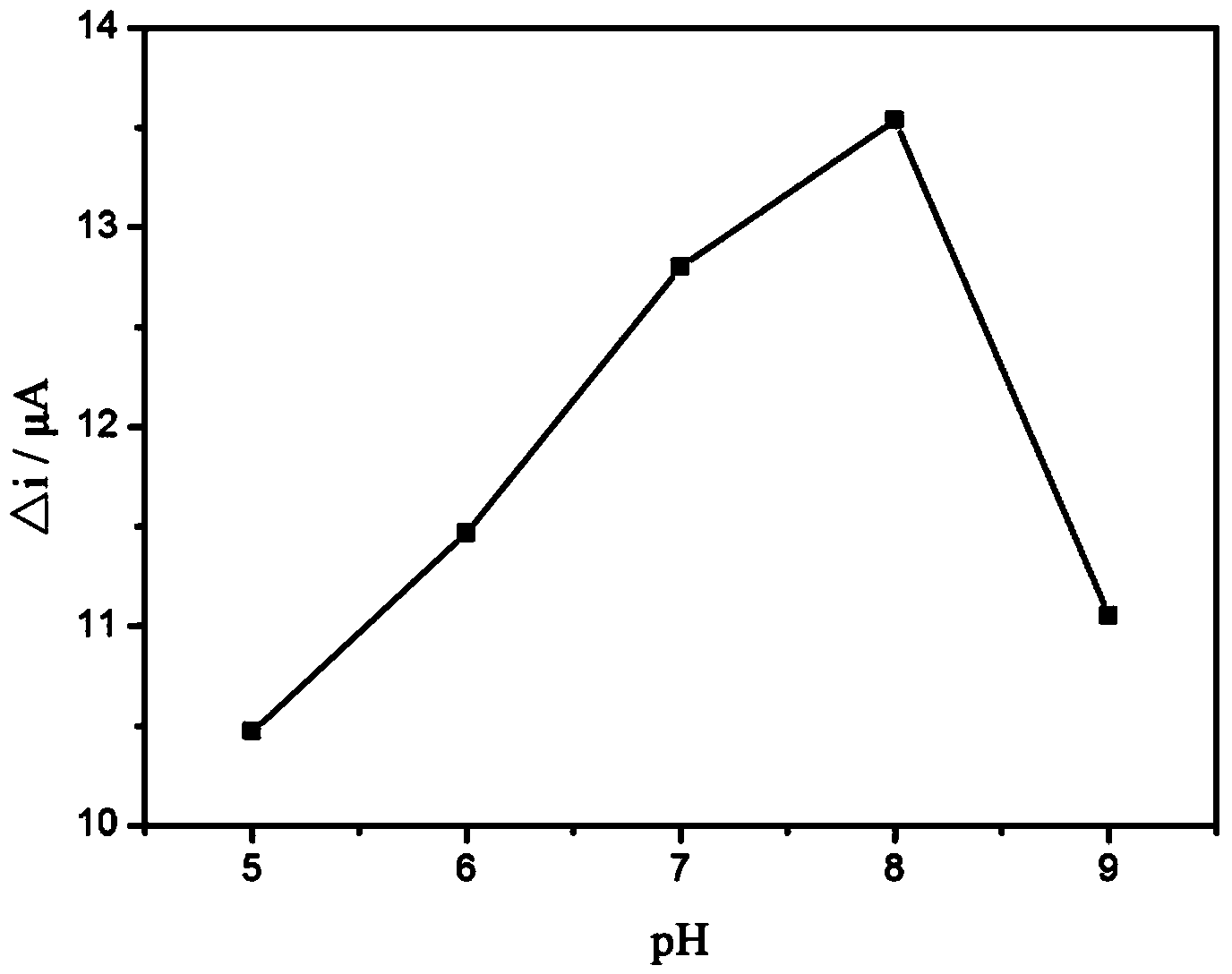Double recognition dopamine imprinting electrochemical sensor and preparation method and application thereof
A dopamine and electrochemical technology, which is applied in the field of dual-recognition dopamine imprinted electrochemical sensors and its preparation, can solve the problems of inaccurate imprinting sites, exposed monomer functional groups on the surface of polymer membranes, and inaccurate specific recognition.
- Summary
- Abstract
- Description
- Claims
- Application Information
AI Technical Summary
Problems solved by technology
Method used
Image
Examples
preparation example Construction
[0026] The invention provides a method for preparing a double-recognition dopamine imprinted electrochemical sensor, the method comprising the following steps:
[0027] (1) 3-aminoboronic acid, 2,5-dimethoxyfuran and acetic acid are carried out contact reaction to prepare the operation of the functional monomer of structure as shown in formula (I);
[0028] (2) In the presence of a buffer solution, the functional monomer and dopamine are mixed to form a polymerization solution, and the glassy carbon electrode is placed in the polymerization solution and scanned by cyclic voltammetry to prepare a polymer film modified electrode;
[0029] (3) placing the polymer membrane modified electrode in an acid solution for electrochemical elution to prepare a double recognition dopamine imprinted electrochemical sensor;
[0030]
[0031] In the operation of preparing functional monomer of the present invention, the consumption of 3-aminoboronic acid, 2,5-dimethoxyfuran and acetic acid ...
Embodiment 1
[0046] 1) Preparation of functional monomers
[0047] Dissolve 100 mg (0.646 mmol) of 3-aminophenylboronic acid in 10 mL of acetonitrile, and slowly add 0.167 mL (1.292 mmol) of 2,5-dimethoxytetrahydrofuran and 0.018 mL (0.323 mmol) of acetic acid while stirring. The above mixed solution was heated to reflux at 80° C. for 6 h to obtain a yellow-brown crude solution. After extraction and purification by column chromatography, a dark pure solution was obtained. Transfer to a rotary evaporator and heat and evaporate at 80°C to obtain a light yellow powder solid product, namely Py-PBA.
[0048] The characterization data of Py-PBA are: 1 H NMR (CD 3 OD,300MHz):δ(ppm):6.262(bs,2H,Pyr-H),7.154(s,2H,BOH),7.417-7.465(m,1H,Ar-H),7.634(d,1H,Ar -H), 7.829 (bs,1H,Ar-H).
[0049] 2) Preparation of polymer membrane modified electrode
[0050] After polishing the glassy carbon electrode on the suede, the K 3 [Fe(CN) 6 ] / K 4 [Fe(CN) 6 ] solution (concentration: 0.1 mmol) was treated ...
Embodiment 2
[0054] According to the method of Example 1, the difference is that the values of the pH of the buffer solution in the process of preparing the polymer film modified electrode are respectively 5, 6, 7, 8, and 9 for the prepared electrochemical sensor, and the electrode The chemical sensor is a working electrode, in a 0.05mol / L PBS solution with pH=7.0, detects 1×10 by DPV method -4 The current signal of mol / L dopamine, the scanning potential is -0.2~0.6V. Test results such as image 3 As shown, the electrochemical sensor prepared at pH 8 has the strongest electrochemical sensitivity to DA.
PUM
 Login to View More
Login to View More Abstract
Description
Claims
Application Information
 Login to View More
Login to View More - R&D
- Intellectual Property
- Life Sciences
- Materials
- Tech Scout
- Unparalleled Data Quality
- Higher Quality Content
- 60% Fewer Hallucinations
Browse by: Latest US Patents, China's latest patents, Technical Efficacy Thesaurus, Application Domain, Technology Topic, Popular Technical Reports.
© 2025 PatSnap. All rights reserved.Legal|Privacy policy|Modern Slavery Act Transparency Statement|Sitemap|About US| Contact US: help@patsnap.com



